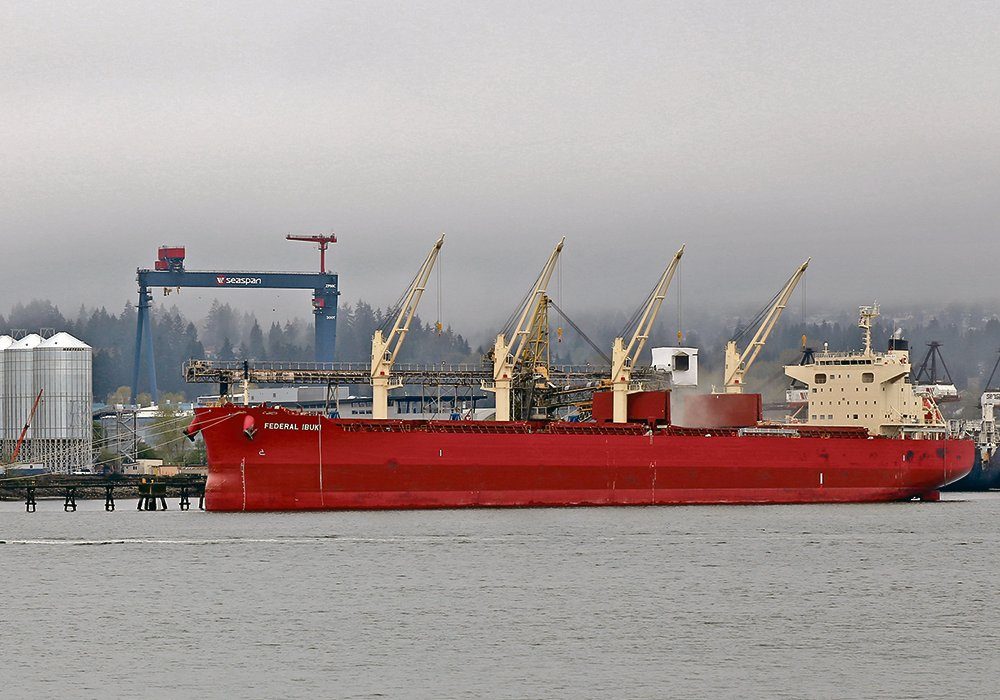Fee cut proposal floated at grain commission

Canadian Grain Commission says the reduction would save grain industry stakeholders nearly $55 million over 2 1/2 years
The Canadian Grain Commission is proposing to cut fees for some services in an effort to bring service fee revenue in line with program delivery costs.
The proposed fee reductions, which would be applied to four different services including outward weighing and inspection of ocean bound grain vessels, are also aimed at stemming the growth of the CGC’s accumulated financial surplus, which currently sits at more than $100 million.
If implemented, the CGC’s proposed fee adjustments would result in cumulative savings to grain industry stakeholders of nearly $55 million over 2 1/2 years.
The savings would be realized by grain companies and grain exporters and, ultimately, by farmers in the form of lower handling costs.
If implemented, the proposed fee reductions would take effect Aug. 1.
In a news release, the CGC said the proposed reductions are in response to the “sustained growth in grain export volumes”, which have resulted in higher than expected CGC revenues.
“We’ve seen the exports of Canadian grains that we are responsible for inspecting and certifying increase year over year,” said CGC’s chief commissioner Doug Chorney in a May 25 interview.
“We want to adjust the fees to make sure they reflect the actual cost of providing the services.”
The proposed changes would result in a combined reduction for official inspection and weighing services fees for outbound ships to $1.05 per tonne from $1.48.
Official CGC inspection and weighing of rail cars, trucks and containers would decrease by $37.88.
The vast majority of savings realized would be the result of reduced fees for outward weighing and inspections services performed at marine export facilities.
Under the CGC’s old export forecasting model, Canada’s projected grain export volumes were estimated at about 34.4 million tonnes annually.
Based on updated models, projected grain exports that will require CGC inspection and weighing will be closer to 48 million tonnes annually.
Total Canadian grain exports in the 2019-20 crop year were a hair over 44.6 million tonnes.
Chorney said higher projected export volumes are the result of many factors including good global demand for Canadian grains and infrastructure investments by grain companies, exporters and railway companies.
The biggest factor, however, is that “farmers are growing more grain.”
“We think … these (export) volumes are sustainable and we don’t want to be collecting any revenues that are beyond our costs,” Chorney said.
“Obviously, if Mother Nature decides to deal us a different set of cards and we’re not able to produce a crop at the volumes we are projecting, that could see us in a potential … revenue shortfall but we do have a contingency fund to help us deal with that….”
According to the CGC, fees paid by grain sector stakeholders would be reduced by about $13.79 million in the 2020-21 fiscal year, representing a cost decrease of 19 percent.
Savings for the 2022-23 and 2023-24 fiscal years are expected to be about $20.68 million each year, a cost decrease of 29 percent.
The CGC’s accumulated surplus has been a contentious issue in the view of some western Canadian grain growers.
By mid-2018, the commission had accumulated a surplus in excess of $137 million, largely because service fees collected by the commission exceeded the cost of providing the service.
Some western farm groups demanded that the surplus be returned to growers, but according to the CGC, refunding the surplus was not possible under the existing legislative and regulatory framework.
The CGC initiated a consultation process and has since directed $40 million into an operational contingency fund and invested a few million into improved programming.
However, the vast majority of the surplus is still intact and unallocated.
Chorney said future investment decisions involving the surplus have been put on hold until the federal government completes its review of the Canada Grain Act, the legislation that defines the CGC’s authority and responsibilities.
“We want to make sure we’re not investing in things that don’t align with the future of how the organization is going to be functioning or operating,” he said.
Some stakeholders who took part in the CGC’s surplus management consultations expressed support for investing surplus funds in the CGC’s grain research lab.
“What we’re really seeing in my time as a commissioner is the growing importance of markets access… and so much of the work that we do at the GRL drives and supports markets access (for Canadian grain),” Chorney said.
“(But) we’ve given assurances in our stakeholder engagements that we are not going to be making any major commitments with those dollars. They’re going to be held until we’ve determined a path forward.”
Source: www.producer.com

